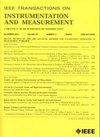基于虚拟样本集成深度神经网络的旋转机械声信号去噪方法
IF 5.9
2区 工程技术
Q1 ENGINEERING, ELECTRICAL & ELECTRONIC
IEEE Transactions on Instrumentation and Measurement
Pub Date : 2025-06-18
DOI:10.1109/TIM.2025.3580900
引用次数: 0
摘要
基于监督式深度学习的声信号去噪方法以干净信号作为参考信号,但旋转机械运行状态的干净信号难以获取,这给去噪模型的构建带来困难。为此,提出了一种基于净信号虚拟样本(CSVS)和深度神经网络(DNN)相结合的声信号去噪方法(CSVS-DNN)。根据调制信号的边带特性选择包含故障信息最多的频带。然后,根据声信号的幅值变化分布、故障特征频率以及在机械结构和空气中的传播路径生成CSVS数据集。然后,利用生成的CSVS数据集和设备实际运行信号构建基于深度神经网络的声信号去噪模型。最后,通过实验数据和实际工业数据,利用信噪比(SNR)和显著度系数(PDC)对降噪效果进行评价。分析结果表明,与其他去噪方法相比,该方法的平均信噪比提高了至少0.6 dB,平均PDC值提高了至少0.05。本文章由计算机程序翻译,如有差异,请以英文原文为准。
The Acoustic Signal Denoising Method for Rotating Machinery Based on Virtual Sample Integrating the Deep Neural Network
The clean signal is used as the reference signal in acoustic signal denoising methods based on the supervised deep learning, but the clean signal of the operating state of the rotating machinery is difficult to obtain, which leads to difficulties in constructing the denoising model. Therefore, the novel acoustic signal denoising method based on the clean signal virtual sample (CSVS) integrating the deep neural network (DNN) (CSVS-DNN) is proposed. The frequency band that contains the most fault information is selected based on the sideband characteristics of the modulation signal. Then, the CSVS dataset is generated based on the distribution of amplitude variations of the acoustic signal, the fault characteristic frequencies, and the transmission paths in the mechanical structure and air. Moreover, the generated CSVS dataset and the actual device operation signal are used to construct the acoustic signal denoising model based on the DNN. Finally, the denoising effect is evaluated using the signal-to-noise ratio (SNR) and the prominence degree coefficient (PDC) through the experimental data and the actual industrial data. The analysis results indicate that the average SNR of the proposed method is improved by at least 0.6 dB, and the average PDC is enhanced by at least 0.05 compared to other denoising methods.
求助全文
通过发布文献求助,成功后即可免费获取论文全文。
去求助
来源期刊

IEEE Transactions on Instrumentation and Measurement
工程技术-工程:电子与电气
CiteScore
9.00
自引率
23.20%
发文量
1294
审稿时长
3.9 months
期刊介绍:
Papers are sought that address innovative solutions to the development and use of electrical and electronic instruments and equipment to measure, monitor and/or record physical phenomena for the purpose of advancing measurement science, methods, functionality and applications. The scope of these papers may encompass: (1) theory, methodology, and practice of measurement; (2) design, development and evaluation of instrumentation and measurement systems and components used in generating, acquiring, conditioning and processing signals; (3) analysis, representation, display, and preservation of the information obtained from a set of measurements; and (4) scientific and technical support to establishment and maintenance of technical standards in the field of Instrumentation and Measurement.
 求助内容:
求助内容: 应助结果提醒方式:
应助结果提醒方式:


